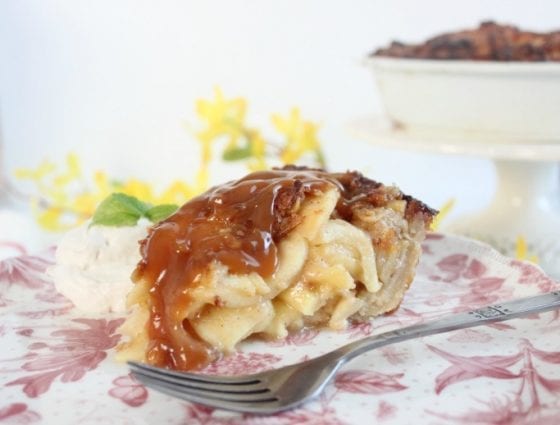Once in a while, we all love a little something sweet. Wine is no exception. After a big meal, there’s nothing better than a little dessert wine to wash down your dinner and end the meal on a high note.
When choosing the right wine for dessert, get creative. You don’t have to stick with just dessert wines. Varieties like Riesling, Merlot, Pinot Noir, Moscato, Cabernet, and Syrah are also great choices, as are many blends.
What is a Dessert Wine?
Dessert wines are sweet wines that are often consumed with dessert or in place of dessert. The ideal dessert wine depends on the type of dessert you are eating. For the best experience, match the wine with the flavor, color, and intensity of your dessert.
How to Choose a Dessert Wine
Familiarize yourself with the different types of dessert wine. There are many different types of dessert wines.
They vary based on the grapes used and how they are prepared. The dessert wines can be divided up as follows:
- Noble rot wines: This type of wine is made from rotten grapes. The grapes are covered in a mold called Botrytis cinerea, commonly known as noble rot. The mold removes water content from the grapes, concentrating the sugar. Sauternes (Bordeaux, France), Riesling Auslese (“late picked”) and beerenauslese (Germany), and trockenbeerenauslese are well-known noble rot dessert wines.
- Ice wines: Grapes are left on the vine late into the season until they freeze. Freezing the grapes dehydrates the grapes, resulting in a very sweet wine. Ice wines are rare and expensive.
- Raisin wines: Similar to ice and noble rot wines, winemakers produce raisin wines by letting grapes air dry on the vine to reduce the grapes’ water content. Check the label for “vin de paille” or “pasitto”
- Fortified wines: These wines are made by adding alcohol during or after the fermentation process. Stopping fermentation allows the wine to retain more of its natural sugars while the addition of spirits increases the alcohol content. Well known fortified wines include Sherry, Port, and Madeira.
- Late harvest wines: Grapes are left on the vine until they get very ripe and sweet. Common late harvest dessert wines include Riesling, Muscat, Pinot Gris, and Gewürztraminer.
Read the label. You can recognize a dessert wine by looking for keywords on the label.
The phrases are often in their original language so it is helpful to know what you are looking for. Here are some common words:
- “Vin de paille” is French for “straw wine” made with grapes that have been dried while still on the vine.
- “Passito” is an Italian wine made from dried raisins.
- “Vendage Tardive,” “auslese,” and “Spätlese” are late harvest wines.
- “Demi-Sec” means “off dry” in French.
- “Amabile” means “slightly sweet” in Italian.
- “Semi Secco” means “off dry” in Italian.
- “Doux” means “sweet” in French.
- “Dolce” means sweet in Italian.
- “Dulce” means “sweet” in Spanish.
- “Moelleux” is “sweet” for some French wines.
Ask for help. The staff at the liquor store or wine shop are your greatest resource when pairing wine with food. Let them know the dessert that you are planning to serve or if you plan to use the wine as dessert.
Match the color. The darker the color of your dessert, the darker the color of the wine should be.
Desserts can be grouped into three categories: vanilla and custards, fruit and spice, and caramels and chocolates.
Common pairings include:
- White wines (e.g. late harvest Riesling) and sparkling wines (e.g. demi-sec champagne, Asti Spumanti) pair well with custard, flan, and vanilla.
- For desserts that contain fruits and spices (e.g. apple pie, berries mini pies) white wines and pink champagne are a good choice.
- For desserts containing chocolate and caramel, red wines (e.g. late harvest Pinot Noir, Grenache, Port (a fortified wine), and Grappa are good pairings.
Choose a dessert wine that is sweeter than the dessert. As a general rule, the wine should be as sweet or sweeter than the dessert you are eating.
If the dessert is sweeter than the wine, your wine will taste bitter.
- If you are unsure of the sweetness of the wine, simply smell it. You are on the right track if you smell honey, molasses, or butterscotch.
- When you swirl the glass of wine, sweet wines will be thicker and stick to the glass more.
Look for complementary flavors. Although each wine varies, many white dessert wines have fruit and/or honey flavors.
For fruit desserts, has fruity flavors, and/or honey flavors, a white wine would be best.
For buttery and caramel flavors, an amber colored sweet wine is a good choice.
- If you do not know which wine to choose, a Port or a champagne are very versatile and pair well with most desserts.
- When drinking the noble rot wines, enjoy them with such desserts as sticky-toffee pudding, 3 leches cake, pineapple upside down cake and custard-based desserts such as crème brulée and crème caramel.
Use wine as dessert. Dessert wines do not have to be paired with food. Wine can actually be your dessert. A Sauternes, port, or a beerenauslese wine are good choices.
Serve in a small glass. Dessert wines should be served in a 3 oz. glass. Sip your wine in a relaxed fashion. After all, it is meant to be savored and enjoyed.
- Dessert wines typically have a higher alcohol content than other wines. The small glass is helpful for this as well.
Get Adventurous with Dessert Wine Pairings
As always, the best wine for dessert will differ from person to person. Some people adore big bold reds with chocolate, while others prefer their wine to be sweeter than the food. The best way to decide which wine to buy for dessert is to simply experiment. Use our tips as a jumping off point and find out what works for your palate.
Picking the right wine for dessert is the perfect way to round off a meal. After all, the final course is the last impression you leave the table with, and you want it to be a good one, especially if you’re trying to impress certain dinner guests.
Now that you have your dessert wines all covered, what about wines that pair best with dinner? We have those for you too. Here is how to pick the right holiday wines for dinner. Your celebrations can soar with these tips for our recommendations of the best holiday wines to pair with food and dessert!

Hi there! I’m Wanda – the creator and author at My Sweet Zepol a healthy food, travel, and lifestyle blog. Passionate about food photography, food styling, entertaining and advocate about creating memories around the kitchen table. With a mission to create easy-to-make meals for the busy family.





Just what I needed for New Year’s! I’m so in the dark about what pairs well with what.
Hope this helps you out for all future events and casual nights!